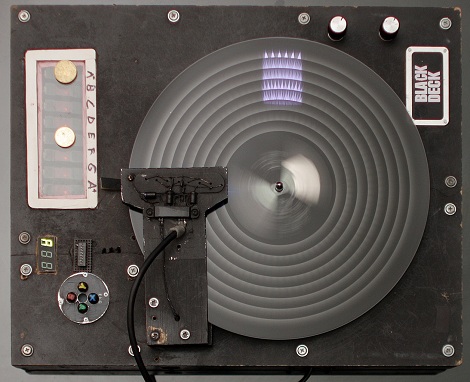
[Olli] sent in his writeup of a musical instrument he made called the Black Deck. [Olli]’s instrument was inspired [Jimi Tenor]’s photophone – a transparent disk attached to a fan and photocell.
A transparent disk is placed on the turntable [Olli] rescued during a dumpster diving expedition. A light shines though the optical disk and is picked up by phototransistors. After writing a program to generate an A minor scale onto a transparency, [Olli] connected his contraption to a stereo and heard his creation speak. To control the individual tracks (or notes) on the disk, [Olli] made a keyboard out of photoelectric switches that control which note is played.
Superficially, [Olli]’s instrument resembles an Optigan. While [Olli]’s instrument is capable of producing waveforms, the Optigan is able to reproduce sampled instruments. That being said, we think [Olli]’s Black Deck would feel comfortable next to the Optigans of Kraftwerk and Devo. Check out the YouTube demo of the Black Deck in action after the break:












